#whole hog
Text

I...am afraid to ask more about Cobra Island.
#old books#catholicism#summer camp#yikes#they just went for it#whole hog#in every way#the cobra is also another name for...
2 notes
·
View notes
Text

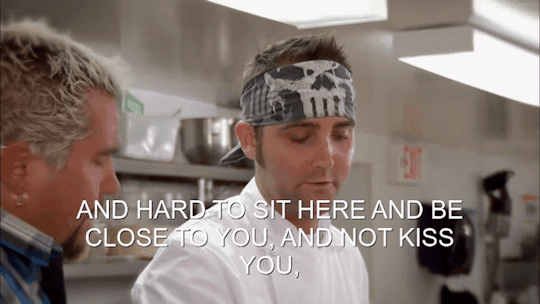

[BUT YOU'RE BREAKING THIS DOWN FROM WHOLE HOG. AND HARD TO SIT HERE AND BE CLOSE TO YOU, AND NOT KISS YOU, THE BETTER YOUR FINISHED PRODUCT. OH, YOU'RE PREACHING TO THE CHOIR.]
#s13e03 kid rock's detroit tour#guy fieri#guyfieri#diners drive-ins and dives#whole hog#finished product#the#choir
21 notes
·
View notes
Text
Preliminary Glance at an American Landscape by John A. Kouwenhoven
From the Blister-Dome of the Wabash Railway’s Blue Bird, en route from St. Louis to Chicago, the spring landscape of central Illinois is one of wide, level horizons with now and then a clump of leafed-out willows or a brief row of maples or elms which have budded enough to look hazy. It is a land of pale coffee-colored fields, darkened in irregular blotches where shadows lie and in strips where a tractor-drawn disc harrow has recently passed. A lone man driving a tractor is the only human being you are likely to see for miles, but there are many other living things: cattle—black, or black and white, and still winter-fuzzy—standing or lying in the unplowed fields; pigs and sheep whose young scamper away from the fenced railroad track when the train passes, though their elders are accustomed and remain still; and quite often a pheasant, green neck feathers shining in the sun, standing close to the track, always with is back turned to the passing train, looking over his shoulder at it but not otherwise disturbed.
The only city you go through is Decatur, a momentary collection of factories, warehouses, and handsome grain elevators, and a business district with some stone buildings of modest dimensions. Most of the towns you go through are small and irregularly square, with streets at right angles to the railroad, many of which do not cross the track but stop short at earth mounds partly covered with grass. Each town has a corrugated sheet-metal grain elevator and a Quonset warehouse or two near the wooden station. The houses are wood, with fruit trees blooming in their board-fenced yards. But there are almost no people in sight, just a few cars moving in the streets or parked at the curbs. And in less than a minute your are out on the prairie again.
Occasionally the level fields are studded with shining ponds, and now and then you see small streams whose flashing surfaces are almost flush with the fields they flow through, or shallow gullies banked with tin cans and bottles which glitter in the sun. Running alongside the track all the way, three tiers of shining wires dip from and rise to the crossbars on the telegraph poles—each of the three crossbars with room for ten bright insulators, some missing, leaving gaps like broken rake teeth. Sometimes the ground bordering the track also dips and rises where the right of way has been sliced down to grade through long, flowing swells of land. But the only real break in the general flatness is a huge eroded mesa, man-made from the waste of what may be strip-mining operations, which stretches along west of the track for miles, somewhere near Reddick or Essex judging by the timetable.
Most of the time there is just the wide, flat landscape of harrow-smoothed earth, ruled into squares by lines of wire fence strung on thin metal posts (not split wooden posts, as in New England), and along the fences there is a fringe of the dry, blond husks of last year’s uncut grass, with now and then a large, unaccountable sheet of wilted brown paper caught on the wire barbs. Once in a huge, immaculate field near Symerton, roughly forty-seven miles out of Chicago, I saw a rock. It was about the size and shape of a dented watermelon, but no one had bothered to move it; the parallel harrow tracks in the smooth dirt diverged to avoid it, then came together again.
Once in a while you see white roads taped across the landscape, and if they cross the track the diesel honks at them. Once in a while you see a lonely schoolhouse, usually of wood, with a flag flying briskly from a pole in front and a yellow bus standing in the grassless yard. Once in a while a field is dotted with round metal grain bins with cone-shaped roofs, looking like a battery of stumpy, unlaunchable rockets. And once in a while, too, near one of the clumps of trees, you see a white farmhouse, with red or white barns—big barns, with ventilators on their roofs looking like little barns straddling the ridgepoles of the big ones. Near the houses tall windmills stand on spindly iron legs, mostly with broken blades in their fans, and almost every farm has a gawky television antenna in the yard as tall as, or taller than, the windmill.
This is a landscape which a century ago looked to a Chicago newspaperman like “the untilled and almost untrodden pastures of God.” Standing with a group of excursionists in the middle of the rolling prairies, the reporter, Benjamin F. Taylor, felt as if he were in the center of a tremendous dish.
Not a tree nor a living thing in sight; not a sign that man had ever been an occupant of the planet . . . The great blue sky was set down exactly upon the edge of the dish, like the cover of a tureen, and there we were, pitifully belittled.
A century later the pastures of God are well-tilled and much trodden. The prairie has become, in fact, a technological landscape: subdivided by wire fences, smoothed by tractors, tied to the urban-industrial world by wires, roads, rails, and by the invisible pulses felt in the lofty antennas. The height of those antennas measures the strength of the city’s pull. As you leave St. Louis they grow taller and taller until, in central Illinois they outtop and almost outnumber the trees. As you approach Chicago they grow shorter until, when you reach the suburban landscape of supermarkets, drive-ins, and rows of little square houses with little square lawns, they need be only small, solicitous bundles of branching wire rods attached to the house chimneys.
The prairie landscape no longer belittles man. It is still vast, and you see very few people as you watch from a train window. But man’s technology has modified everything from the texture of the earth itself to the stance of the pheasants.
This landscape, through which I last traveled three years ago, came freshly to my mind as I began to assemble and revise the essays in this book. It did so, I think, because it embodies a number of the forms and patterns which seem to me to be characteristic of a civilization based as ours is upon a distinctive blend of technology and a somewhat untidy but dynamic form of democracy. And it is with some of these characteristic forms and patterns, and the indigenous energies they express, that these essays are primarily concerned.
There are other American landscapes, some of which embody forms and patterns that seem to have little in common with those of the prairies: the landscape of Maryland’s trim and cultivated Eastern Shore: the barbaric splendor of the Southwest’s mesas and canyons; the grim and powerful landscape of River Rouge; and—more like the prairies than it first appears—the New York Skyline.
The most endearing and comfortable landscape, to me, is in Vermont, where I spend the summers on a farm which lies like a large green saddle blanket on the small of the back of a mountainous ridge along the western border of the state. Eastward from the farm you can look down in the domesticated Vermont valleys of Pawlet and Dorset, with pasture clearings running well up the enclosing slopes. Westward you look out over a widening, open-ended valley where the tree-hidden village of Rupert lies, where dogs bark distantly in the evening, and where an occasional light blinks through the trees after dark. At the far, open end of the valley the D & H Railroad comes down from the north and curves westward into New York State toward the Hudson and the Susquehanna. You cannot see the trains but when the wind is right—when rain is coming—you can hear the imitation steam-whistle which the railroad, in tune with the new industrial sentimentality, has substituted for barking horns on its diesels. And beyond the valley’s open end the continent rolls gently westward through the Mohawk Valley and then invisibly onward past the Great Lakes, lifting easily across the prairies and plains. You can believe that if the atmosphere were glass-clear and the earth did not curve you could see two thirds of the way to the Pacific, for there is nothing high enough to block the view till you come to the Laramie Range and the Big Horns. Closed and friendly to the east, open and inviting to the west, it is a likable landscape.
It is, I suppose, the landscape of this eastward-and-westward-looking Vermont farm, superimposed upon the landscape of New York’s skyline, which controls the point of view from which I have looked at America. But the characteristic landscape of the America I have looked at in these essays seems to me to be the “interminable and stately prairies,” as Walt Whitman called them, ruled off by roads and fences into mathematical grid. They have become, as Whitman thought they would become, the home of “America’s distinctive ideas and distinctive realities.” They produced Abraham Lincoln and the city of Chicago—both of which are ideas as well as realities and both of which seem to me, at least, to be distinctively American.
#pearl diver#savoring everything unintentional about this essay like one of those watermelon candies that releases chamoy if you suck on it long enough#whole hog
3 notes
·
View notes
Text
Rodney Scott's BBQ
Our first BBQ stop in Charleston was local legend Rodney Scott’s BBQ. Rodney is known as a master of whole hog Carolina style BBQ.
We tried the pulled pork, pork shoulder, pimento and cheese links, smoked wings, coleslaw, collard greens and banana pudding.
My favorite items were the links and the pudding, but I’m a sucker for links.
Between the two pork items, the shoulder took the W.
The…
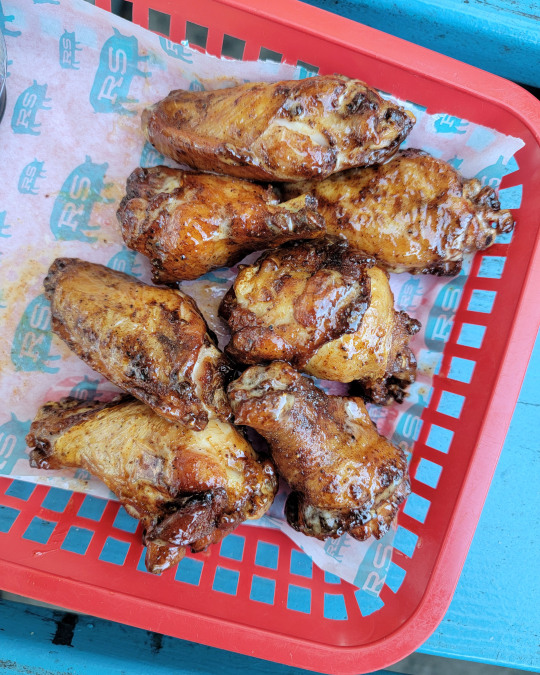
View On WordPress
0 notes
Text
Title:
Neon Pig Catering
Description:
"Neon Pig Catering, situated in Colorado Springs, is a lively and unique catering company. Our culinary team is dedicated to providing amazing dining and service experiences. We specialize in creating various menus that combine bold flavors and inventive presentations for both private gatherings and large-scale events. We provide a variety of alternatives, from traditional favorites to cutting-edge fusion cuisine, with a focus on locally produced ingredients. Neon Pig Catering combines culinary expertise with a creative touch to ensure every occasion is a resounding success, whether it's an exquisite wedding reception, a corporate luncheon, or a casual backyard BBQ. Discover the bright flavors that distinguishes Neon Pig Catering."
Website URL:
https://neonpigcatering.com/
Maps URL:
https://maps.app.goo.gl/qKouRJRhJWupx5Be6
#Catering#Personal Chef#Cooking Classes#Whole hog#Wedding Catering#Corporate Catering#Event Catering#BBQ Catering
1 note
·
View note
Video
youtube
How to Cook Whole Hog BBQ with Pitmaster Rodney Scott | Allen & Ginter U...
0 notes
Text

i had to
#how can such a small puppet take up So Much Space....#scientists are still baffled! physicists hate him!#but he is so so Cozy!#how can one sleep when a) theyre deprived of boyfriend & b) being stared at the whole night by someone who wont stop muttering#answer: howdy simply Does Not!#he will take his revenge by hogging the blankets...#scribble salad#laughingstock#barnaby x howdy#howdy x barnaby#tw eye contact#i swear i didnt mean to scribble wally looking Directly at the camera#but hey! he sees us doesnt he!
4K notes
·
View notes
Text
public transport should be free for everyone forever and I am not kidding. it’s not my fault that I’m disabled and poor and need to get places
#tax the rich#their asses can pay for my travel#buses lose money anyway why not go the whole hog and make them free?#also it should be illegal to kick someone off the bus#guess what just happened to me?#yeah#anyway
34K notes
·
View notes
Text
Spanish Cochinillo Asado: Roast Suckling Pig
Cochinillo Asado is a roasted suckling pig dish from the Castile region of Spain. Here we cooked this famous dish on our rotisserie on our Big Green Egg. Cooked over Rockwood lump, hickory, and apple.
Protein:
Origin: Spanish, European
Method: Grill or Smoker, Rotisserie
What is Cochinillo Asado?
Cochinillo Asado is a famous Spanish dish consisting of roasted suckling pig. The young suckling pigs are roasted until the meat is extremely tender and the skin is crispy. The dish is most famous in the town of Segovia, in the Castille region of Spain, where the chefs show of the tenderness of…

View On WordPress
0 notes
Text
There’s something so raw about the image of Cardan with his sleeves rolled up washing the blood off Jude’s hands, after he’s ruined his velvet jacket to stop her bleeding. It’s one of the moments where we clearly see how much he cares for her. He wouldn’t let the guards touch her, despite—from his perspective—not having any way of knowing she wasn’t there to kill him. On top of that, he declares to the palace crowd that Jude is the rightful Queen of Elfhame, who is not in exile, stunning everyone. And then later tells Jude that he had been terrified, not of her but for her.
“It was terrifying,” he says, “watching you fall.”
“Mortals are fragile,” I say. “Not you,” he says in a way that sounds a little like a lament. “You never break.”
Jurdan are wild because they may not have been able to verbalise what they felt for each other, nor even admit it to themselves, but it showed through their actions anyway.
#this was maybe the moment cardan really warmed up to me#and later jude’s like damn i hogged his bed this whole time crap#like guaranteed jude he was just scared he might lose you he didnt give one damn about u getting blood on his sheets#he was terrified for you he said as much!#ahhhhh#jurdan#jude duarte#cardan greenbriar#jude x cardan#the queen of nothing#the cruel prince#the queen of nothing spoilers#tfota#the cruel prince spoilers#AHHHHHHHH
945 notes
·
View notes
Text
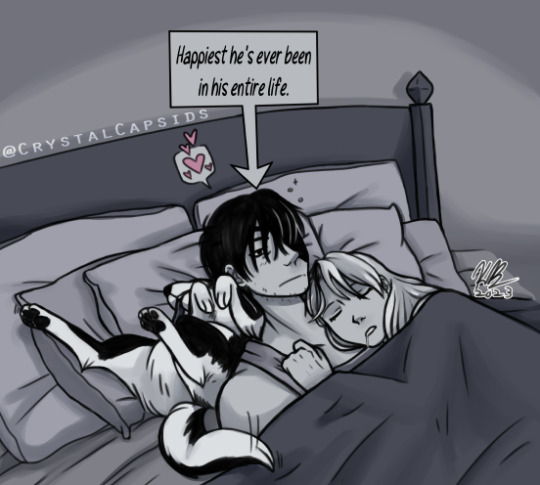
He's never allowed to move again. Trapped forever. Legend has it he's still in bed with his wife and dog to this day.
#fma#fma03#fma fanart#royai#riza hawkeye#roy mustang#black hayate#fullmetal alchemist#he's the luckiest motherfucker in the whole world#MOVE LET ME IN THERE#crystal art and writing#riza is a stage 5 clinger#if she isn't koala'd onto his arm she's hogging all of the blankets#this one if one of my favs from this year
915 notes
·
View notes
Text
He laid there on the ground, letting the cold sink into his bones as he bled out. Deep down, Danny had known for a long time this was coming. He was the Shadow, the Spare. The Inferior. He'd always been the shame of his family. After all, what good was an assassin that didn't kill?
That's why he knew it'd only be a matter of time before Grandfather got rid of him. He just never expected it to be like this. Struck down by his own brother. In hindsight, it made sense. It was a way for Damian to be completely initiated before his first mission and to cut off the rotted rope of the Al Ghul line.
It made sense, Danny repeated to himself, but it didn't stop the hurt. The pain that cut deeper than the sword to his gut. Damian hadn't even hesitated. He'd picked up his weapon and charged as soon as Grandfather had told them to begin the duel. Sure, he'd known Damian was never too fond of him. And maybe sometimes he'd thrown knives at Danny whenever he called him "Dami". But he always thought there was at least some form of affection between them. After all, they were twins. Yet Damian had ran him through as easily as breathing. He hadn't even spared a glance back as he left with Grandfather and Mother. None of them had.
Danny couldn't help but weakly chuckle. To think this was how his second death would go. Being stabbed by his own brother.
As his consciousness began to fail him, Danny distantly heard was sounded like a plane. Maybe a jet. He heard once that people can hallucinate before they died. Funny, he always figured he'd hear a train or something. Maybe a family member calling his name sweetly. Instead Danny heard heavy footsteps charging towards him. Gloved hands picked him up and held him close to a chest as an unknown voice whispered, "I've got you."
Ah, he realized what was happening. This was his mind's desperate attempt to give him some comfort in his final moments. It was nice, feeling cared for like this. He couldn't remember the last time he had been. Danny quietly thanked his mind for the blissful illusion, before his consciousness fully faded away.
(Bruce finds out he has a son and goes to rescue him. He gets there just in time to stop Danny from bleeding out and leaves, not knowing he's leaving his other son behind.)
#dp x dc#dc x dp#dpxdc#dcxdp#winter's tales#basically the thought behind this was what if danny had the complex instead of damian?#danny has spent his whole life being overshadowed by damian#even in his past life#more people seemed to care about jazz than him#that's why when he realizes bruce doesn't know about his twin#he doesn't bother to correct him#damian is plenty happy at the league and has fully bought into grandfather's teachings anyway#why shouldn't he hog the attention of his newfound family?
1K notes
·
View notes
Video
BUT YOU'RE BREAKING THIS DOWN FROM WHOLE HOG. AND HARD TO SIT HERE AND BE CLOSE TO YOU, AND NOT KISS YOU, THE BETTER YOUR FINISHED PRODUCT. OH, YOU'RE PREACHING TO THE CHOIR. You ARE BEING MADE TO GIVE ME YOUR PERSONAL RIDICULOUSNESS WITH NO FAILURE TO KNOW HOW YOU HEAT FOR DOGS. SO, WE'RE COMING TO HELP YOU SEE.
#s13e03 kid rock's detroit tour#guy fieri#guyfieri#diners drive-ins and dives#whole hog#finished product#the#choir
0 notes
Text
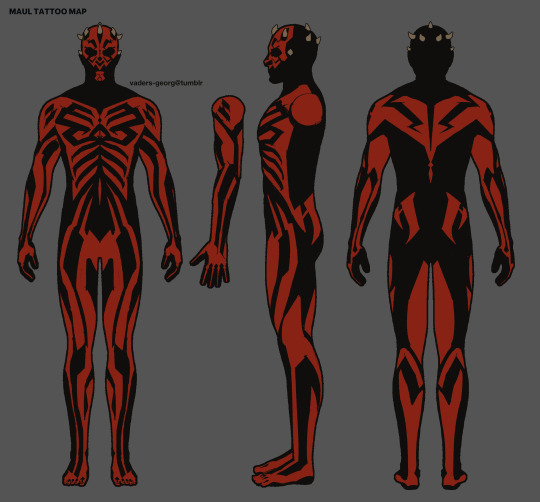
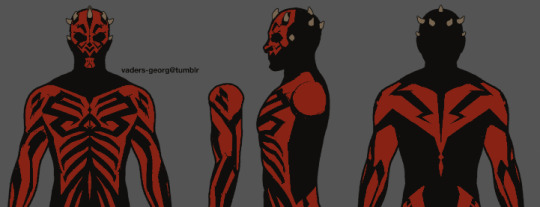
I had so much fun with Lasher's tattoo map that I went ahead and did Maul's too, since canon sources disagree on what his limbs should look like/there's no ref for his biological legs at all.
I mostly based this off of reference from TCW and the Darth Maul comics run in 2000.
edit 4/28/24: edited his fingers.
#darth maul#maul#star wars#my art#nightbrother#tattoo map#for the record i DO think his hog is tattooed. but that's a whole 'nother bag of beans#i might add that on later idk
288 notes
·
View notes
Text


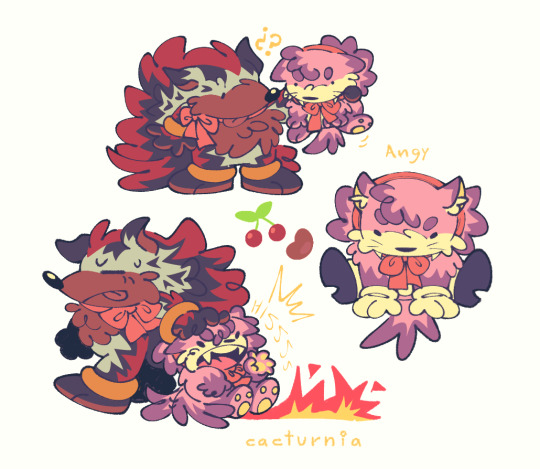

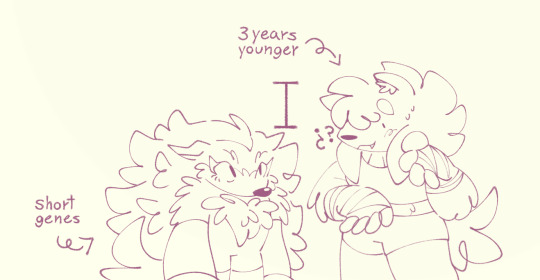
Two of them!!
#I offer you my sillies🤲🤲#Never thought id be making fankids out of anything at all ever but here we are#chili bean who took me a whole month of doodling to figure out their lore and design#and cherry who got her whole design figured out at the second doodle i did on my phone hsdjgsk#so like yeah#chili bean was abandoned in an eggman™ metal box in front of tails' workshop three years before cherri spawned somehow as a blazamy kid🫶#(matching bows courtesy of Amy!)#sth#sonic#sonic the hedgehog#sonadow#sonadow fankid#sonadow fanchild#blazamy#blazamy fankid#fanart#chili bean the hedgehog-hedgehog#cherry rose the cat-hog#cacturniart
217 notes
·
View notes
Text


i have to do everything my damn self around here


#sonic the hedgehog#sonic#sth#archie sonic#sonic unleashed#sonic the werehog#okay now that i got those out of the way . hi#quite licherally rode a wave of 'i miss my guy' and did a whole. thing. i guess.#i just think he should go a little crazy go stupid. okay. don't ask me about those colors btw i just did vibes#i think they're kinda nice maybe. yes i think the werehog should have paw pads and black claws and like greeny yellow sclera#my art#okay i kinda wish i put this on my art blog instead of the reverse but... i don't want to retype these tags . so goodbye#kinda weird formatting bc i. used such a thin brush i think the whole thing will probably be crunchy ... i assume. so#close ups of my two faves which both happen to be tyson hesse hogs!
1K notes
·
View notes